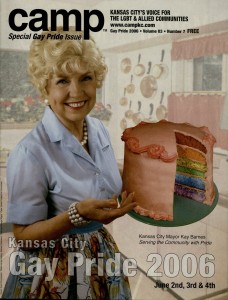The trend towards making a profit from the Pride Celebration that started in the 1990s continued into the new century. Various entities were formed to manage production of the event, some with greater success than others. Pride Celebrations in Kansas City during this time were plagued with real or perceived financial malfeasance, which soured the event for many.
The scale of the events, however, continued to benefit from the influx of funds and grew as the decade progressed. The location was shifted from Barney Allis Plaza to Penn Valley Park, which could accommodate more attendees, more vendors, and a larger stage for entertainment. Several years saw a Street Festival in what is now the Crossroads District prior to the weekend’s main events in the park. Exhibitor booths expanded to include a much greater percentage of commercial vendors, further contributing to the move towards a greater corporate feel to the Celebration. Marketing seemed to be a goal, not community-building.
Support from politicians for the LGBT community and its concerns was another facet of the Pride Celebrations that expanded during this time as well. Proclamations for Pride were regularly issued by city, county, and state leaders. But nowhere was this support made more memorable than the cover of the June, 2006 issue of Camp, Kansas City’s primary LGBT news periodical. Mayor Kay Barnes, a longtime supporter of the LGBT community, appeared in a blond wig and 1950s housewife garb holding a iced rainbow cake:
It was a masterful and unforgettable depiction of growing political support for Kansas City’s LGBT communities.

